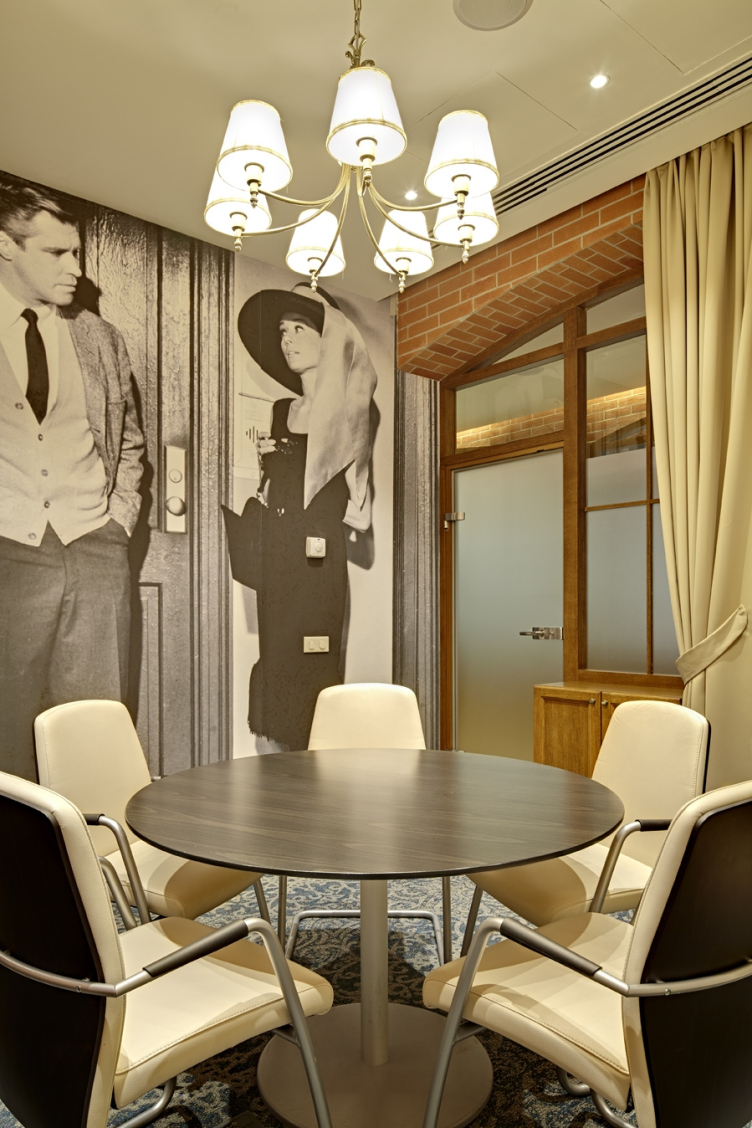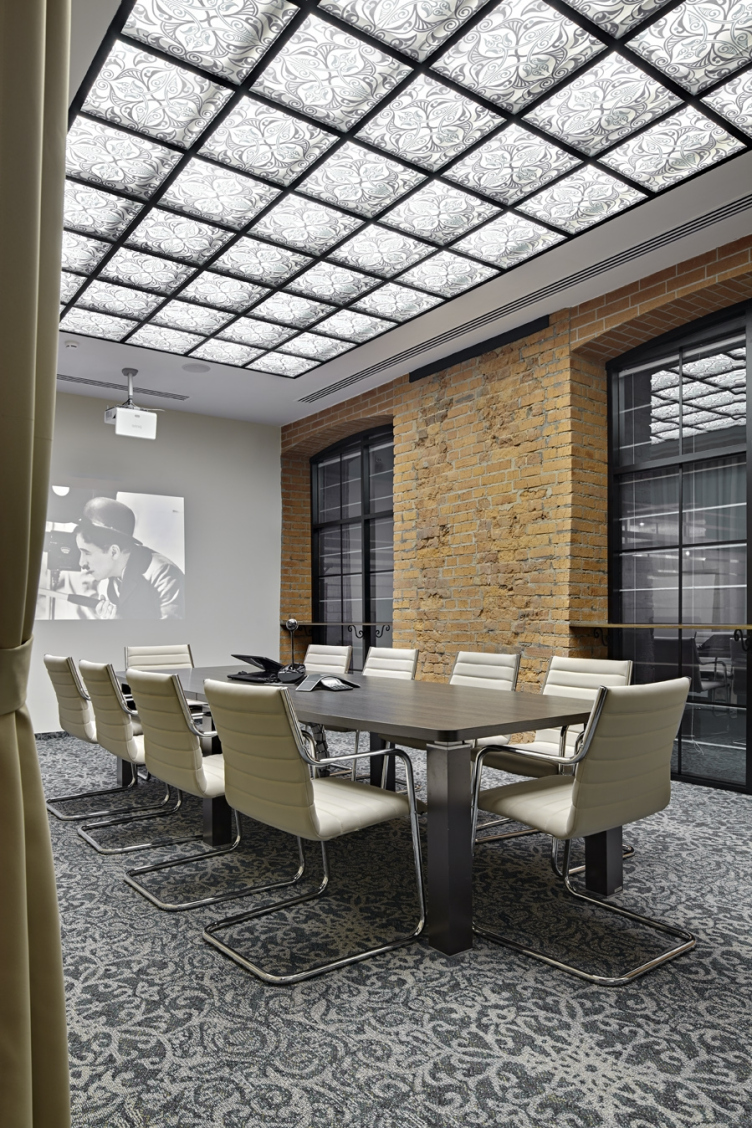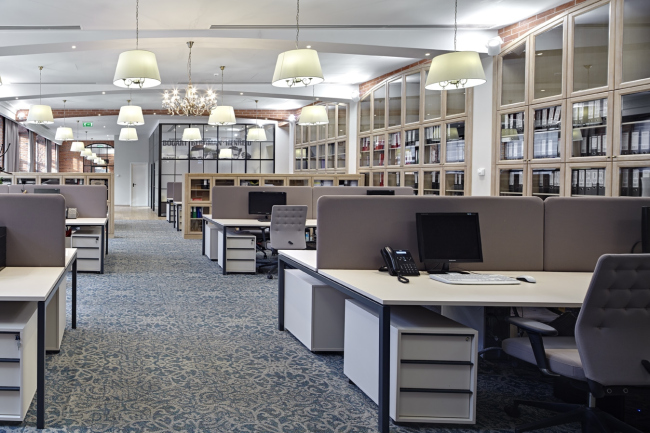
"ProfMedia Management / Central Partnership" office. UNK project
The "ProfMedia" HQ is situated in one of the buildings of "Danilovskaya Manufactura" that has recently turned, after a grand-scale, though unobtrusive, reconstruction, into one of the largest and most famous business centers of Moscow. "ProfMedia" are renting the entire one of the former factory buildings: the austere red-brick building with a poetic name of "Calico". As for the architects, they were requested to create within its walls a space that would look different from the conventional office and that would harmoniously combine the "factory" aesthetic and the almost homely feel. The authors of this project, UNK Project's Nikolai Milovidov and Anna Dykhanova, really liked the task - which let them create inside the office the humanly lively and friendly atmosphere, distant from the hackneyed images of the tiresome monotony of the look-alike days at the office. In the architectural bureau, this project even got a pet name of "anti-office".
Meanwhile, "last I checked", the business function was still to be there - and the main difficulty consisted precisely in the task that, while creating a visually diverse space, sometimes even close to the interior of some private villa, the architects were still supposed to correctly organize all the working functions in general with regard to the specifics of "ProfMedia" in particular - shares Nikolai Milovidov. For one, the premises are particularly ergonomic and comfortable to be in: the architects though out, down to the tiniest detail, the convenient ways of moving around the office and the details of the workplaces, while the furniture of the recreation areas, though capable of looking to a casual observer as it it was carried over here from some French interior of the proverbial Lucien epoch, still answers the world's best comfort requirements. In a word, the dualism of the space that looks like a home but that indeed is all about business is to be seen everywhere here.
The main theme that allowed the architects to unite such different things, was set by the very profile of the company. The building houses two divisions of "ProfMedia": the third floor hosts "ProfMedia Management", and the second - "Central Partnership" that specializes in producing and distributing feature films. Hence the large black-and-white photographic prints that play back the best shots of the cult and modern movies - one of the most eye-catching and tell-tale details of this space.
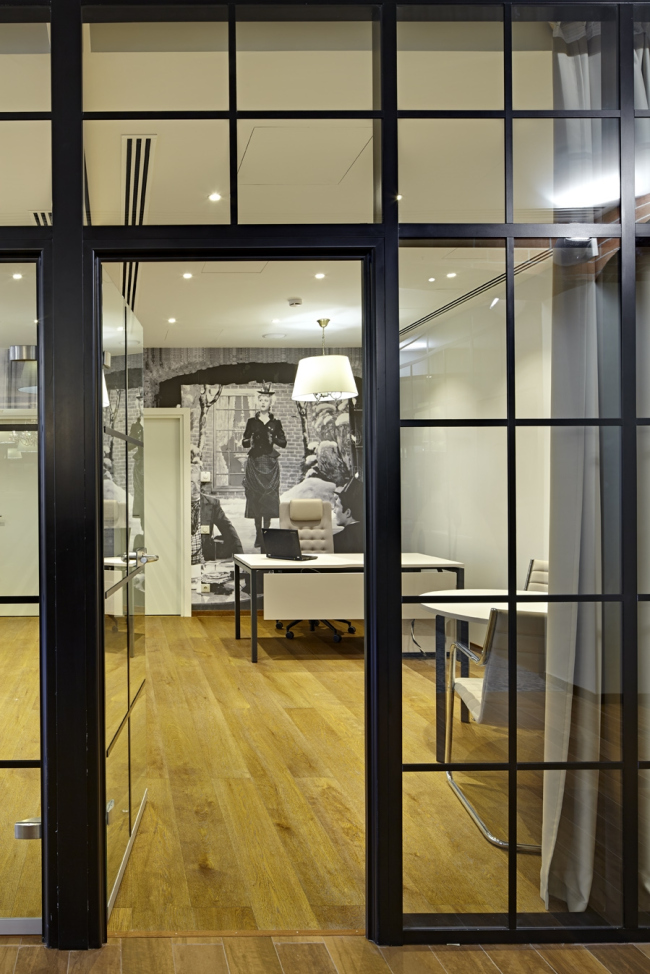
"ProfMedia Management / Central Partnership" office. UNK project

"ProfMedia Management / Central Partnership" office. UNK project
It is not the prints alone, however, that make the interior look - only at times, though - like a studio set or something that was left of it, like a set of cinematographic artifacts that alternate, like in a theater foyer, with real photographs. The imagery of the pavilion that best shows in the closeness of the mafia-style blue sofas and the portable spotlight makes appropriate the glitter of the baroque frame against the rough, ostentatiously textured brick wall, the "antique" riveted leather chair, and the combination of the wooden Viennese chairs next to the bar counter and the 1960's style aluminum-tube furniture. Put together, these things look like fragments of studio sets or the rare artifacts that have been accumulating here over the more-than-a-century history of cinema - not redundant, though, but arranged in such a way that it still keeps the business-like laconism.
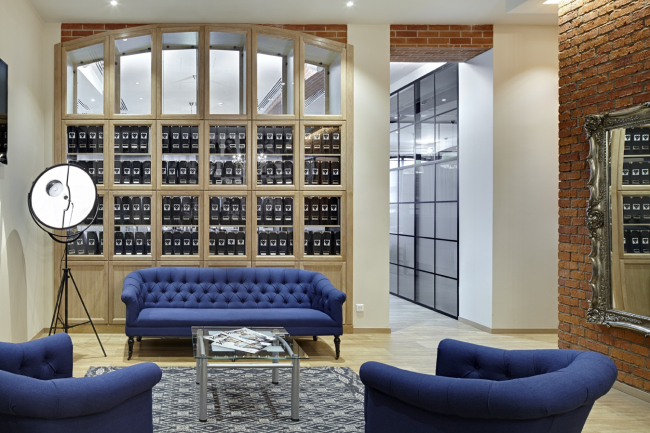
"ProfMedia Management / Central Partnership" office. UNK project
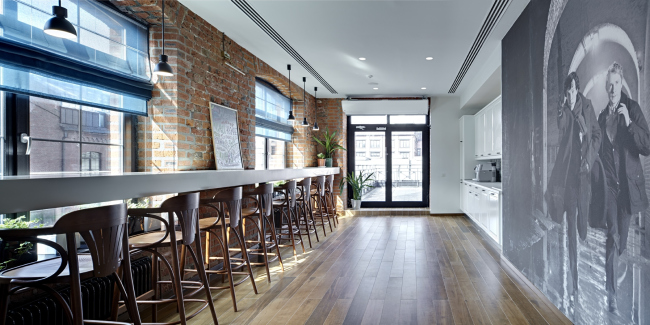
"ProfMedia Management / Central Partnership" office. UNK project
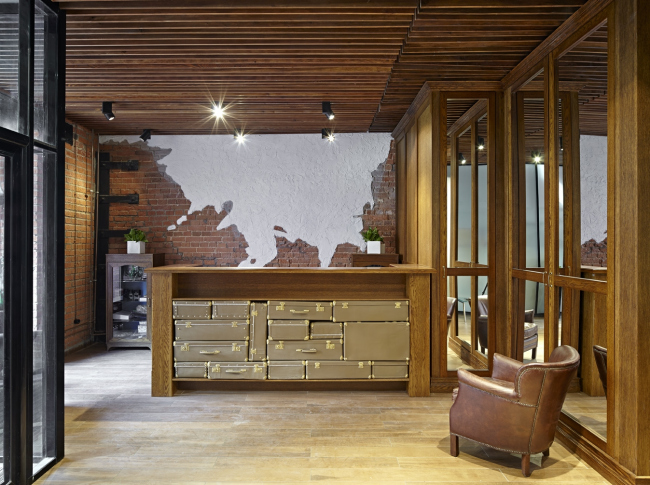
"ProfMedia Management / Central Partnership" office. UNK project
The theme of the history of cinema resolves not only the contrasts between the different objects that the interior is so rich in - it also "explains" the diversity of the textures that one sees here. For example, there are no homogeneous walls here: the photographs neighbor on the white office surfaces, open brickwork, and the grilled frames of the glass windows - these are augmented by the large waves of the Roman curtains that frame the tall factory windows with their wooden sashes. The pale grayish color of the curtains softens the contrasts and finds a continuation in the reserved beige and light gray shades of the office furniture, calm and business-like but not garish-white, also meant to combine the feel of an expensive comfort with the environment that is conductive of working concentration.
Dividing the open space into different zones was facilitated not only by the office-genre-classic glass and acoustic partitions - the zoning function was also effectively performed by the open shelving units used to store the archives of the media holding. Besides, saving up the useful square footage was also made possible by using the built-in furniture: aligned along the walls, the tall closets of glass and light-colored wood matching the tone of the furniture and the curtains, and the storage cases built into the partitions.
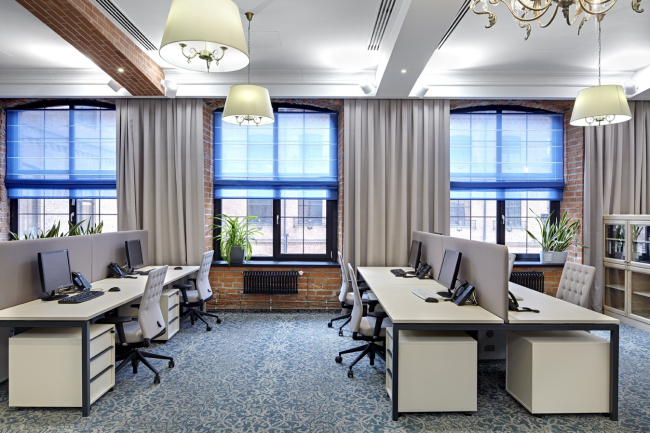
"ProfMedia Management / Central Partnership" office. UNK project
To boost the natural light coming on from the large factory windows, the architects came up with a whole system of lighting up the workplaces: the gently sloping arches of the ceiling are accentuated by the reflected light; the light chandeliers are hung in several rows, added up by spotlights. The light, as we can see, also combines the contemporary office techniques with the traditional ones, not alien to the flavor of the all-but-recent history.
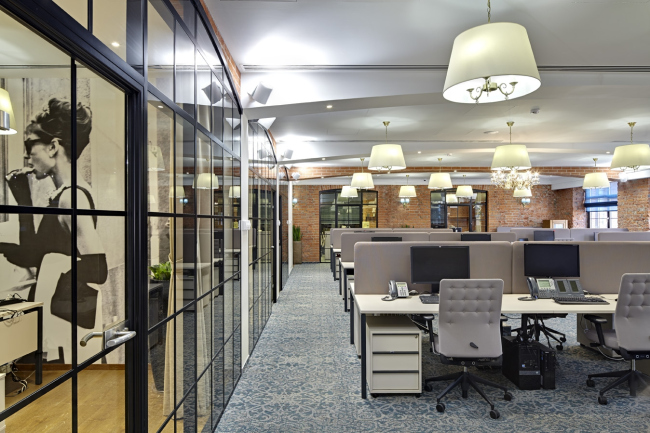
"ProfMedia Management / Central Partnership" office. UNK project
The first floor of the building is given to the entrance area and the lobby, from which one can descend to the staff-only cafeteria and the area of the meeting rooms that are mostly situated in the basement floor. The sufficient amount of meeting rooms was one of the main conditions to be met while designing the new office; their reserved and at the same time flashy image is designed in the contemporary spirit of the "new ornamentalism": the backlit pattern on the ceiling echoes the floral ornament of the floor cover of the so-called "carpet slabs". A similar technique is repeated in the interiors of the studies situated on the second and third floors; the monochrome ornamental carpets are to be seen everywhere, alternating with as warm texture of the oak laminated flooring. We will note at this point that the ornament not only enhances the Art Deco note that sounds in the interior design reminding us of the times of the movie classics but also - from quite the opposite side - reminds of the past of this factory building that, as we remember, has the name of "Calico". Double contextual.

"ProfMedia Management / Central Partnership" office. UNK project
The interiors of the offices of "ProfMedia Management" are designed in the same style. Most of the space is occupied by the employees' studies; the C.E.O.'s and the President's area, as they should be, are filled with air and light. The project also provides for a small recreation area, even though one should say that the building has in it very few places dedicated specifically to recreation - only small coffee points on each floor.
The exquisite colors, the harmonious combination of ornaments, the echoing of the textures, the play of the lights and shadows, the forms and the meanings - all this forms inside the building the atmosphere that, as the authors claim, despite its relaxed feel, will be great not only to be but also (and most importantly) to work in.






